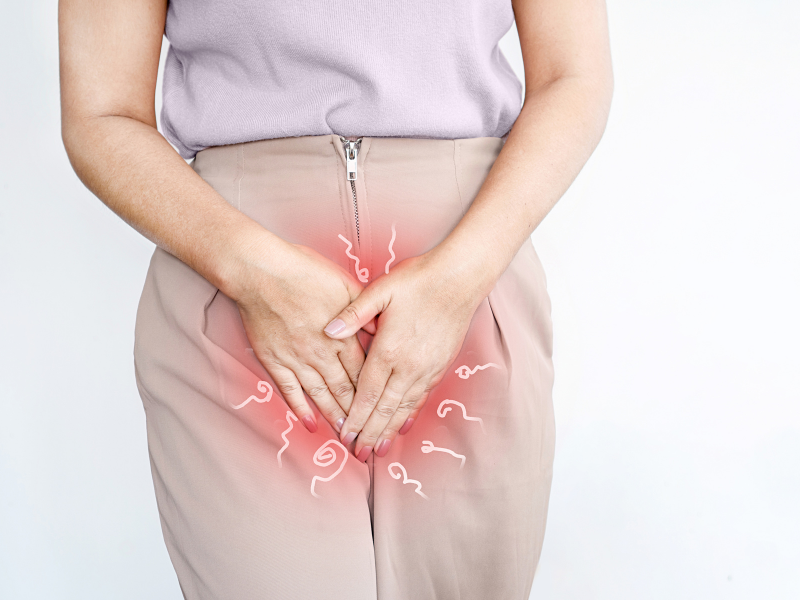Vaginitis

Vaginitis is an inflammation of the vagina that affects millions of women each year. It is characterized by irritation and inflammation of the vagina. This can result in a variety of symptoms, such as abnormal or increased discharge, irritation, itching, fishy odor, painful urination, or vaginal bleeding.
Vaginitis Types and Causes
There are several types of vaginitis, each with its specific causes. The three most common types of vaginal infections are:
1. Bacterial vaginosis (BV)- This is caused by an overpopulation of bacteria that naturally occur in your vagina, disrupting the natural equilibrium. Numerous factors can alter the balance of bacteria, including:
· Douching
· Taking antibiotics
· Using an intrauterine device
· Having numerous sexual partners.
· Have unprotected intercourse with a new partner.
2. Candida vaginitis (yeast infection)- These are typically caused by the naturally existing fungus Candida albicans. It’s the second most common type of vaginitis and can result in itching, irritation, and a thick, white discharge that resembles cottage cheese.
3. Trichomonas vaginitis (trich)- This is a sexually transmitted disease (STD) caused by a protozoan. It is the least common type of vaginitis and can result in itching, irritation, and a frothy, gray-green discharge.
Symptoms of Vaginitis
The symptoms of vaginitis can vary depending on the type of infection or irritation. Common symptoms include:
- Abnormal or increased discharge
- Fishy odor
- Itching
- Irritation
- Painful urination
- Vaginal bleeding
Trichomoniasis does not always cause symptoms. If you have them, you will experience itching, burning, and soreness in the vagina and vulva. You may experience burning while urinating. You may also experience gray-green discharge that smells awful.
Is It Contagious?
Bacterial vaginosis and yeast infections are not considered contagious, but trichomonas vaginitis is a sexually transmitted disease. It is essential to inform your sexual partners if you are diagnosed with trichomonas vaginitis so that they can be treated as well.
How is vaginitis treated?
The treatment for vaginitis depends on the cause of the infection or irritation. It may consist of low-potency topical steroids administered to the skin, topical or oral antibiotics, antifungals, or antibacterial lotions.
· Bacterial vaginosis is typically treated with antibiotics like metronidazole or clindamycin.
· Yeast infections are treated with antifungal medications like Clotrimazole and butoconazole.
· Trichomonas vaginitis is treated with antibiotics. All sexual partners must be treated to prevent reinfection.
Additional choices include:
· Cortisone cream is used to treat severe inflammation.
· Antihistamines, if the inflammation looks to be caused by an allergic reaction.
· If vaginitis is caused by low estrogen levels, apply a topical estrogen cream.
Vaginitis Prevention
There are several steps you can take to prevent vaginitis:
1. Practice good hygiene by wiping from front to back after using the bathroom.
2. Avoid using irritating products, such as douches, feminine hygiene sprays, or scented pads and tampons.
3. Use condoms during sexual activity to prevent STDs.
4. Avoid tight-fitting clothing and wear breathable underwear made of cotton.
5. Practice good hygiene during menstruation by changing tampons and pads frequently.
Vaginitis is a prevalent issue among women, causing symptoms like abnormal discharge, itching, irritation, and painful urination. Various types exist, each with unique causes. Consulting a healthcare provider is crucial for proper diagnosis and treatment. Practicing good hygiene, using condoms during sex, and avoiding irritating products can help prevent vaginitis.



